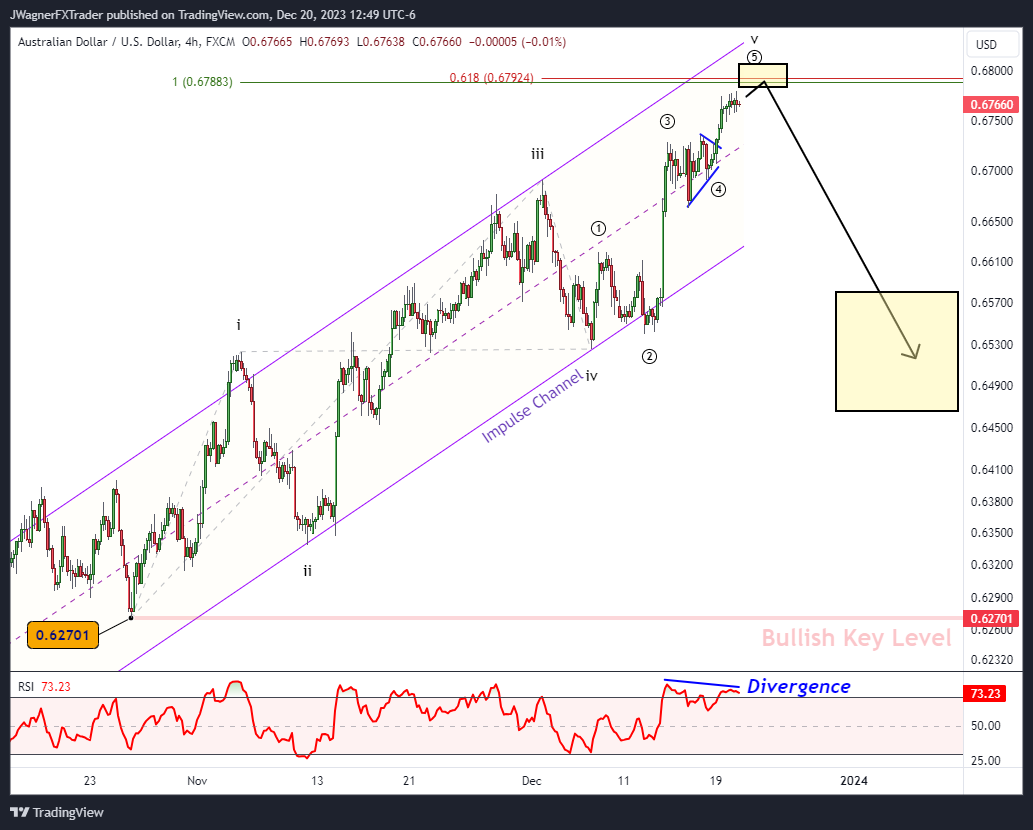AUD/USD nears the end of bullish Elliott Wave pattern
|
Talking points
-
AUDUSD bears the completion of Elliott wave impulse pattern.
-
Aussie decline to .6460-.6580 is considered "normal".
Current Elliott Wave count
Just one week after the street is expecting several rate cuts by the Fed in 2024, AUDUSD has accelerated higher. However, these highs simply suggest the end of a completed Elliott wave impulse pattern.
Beginning October 25, AUDUSD began to rally in an Elliott wave impulse pattern. The impulse is marked with five waves labeled i-ii-iii-iv-v.
The first four waves of the impulse pattern appear in place and we are nearing the end of the 5th wave. It appears AUDUSD is in the 5th of a 5th wave as our RSI oscillator is indicating bearish divergence. Under this count, the current rally is a terminal wave and is about to turn lower.
The market’s geometry is highlighting multiple wave relationships near .6790 but the market does not have to stop there.
Once this Elliott wave impulse pattern expires, Aussie will experience its largest decline since October 25. This decline could carry prices down to .6460-.6580 which is over 200 pips from today’s pricing.
This incoming decline is viewed as a corrective decline and should only partially retrace the October-December uptrend. AUDUSD pricing should remain above the October 25 low at .6270 under the wave count.
Information on these pages contains forward-looking statements that involve risks and uncertainties. Markets and instruments profiled on this page are for informational purposes only and should not in any way come across as a recommendation to buy or sell in these assets. You should do your own thorough research before making any investment decisions. FXStreet does not in any way guarantee that this information is free from mistakes, errors, or material misstatements. It also does not guarantee that this information is of a timely nature. Investing in Open Markets involves a great deal of risk, including the loss of all or a portion of your investment, as well as emotional distress. All risks, losses and costs associated with investing, including total loss of principal, are your responsibility. The views and opinions expressed in this article are those of the authors and do not necessarily reflect the official policy or position of FXStreet nor its advertisers.
